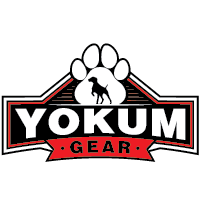Aggressive behavior in dogs can be a significant concern for pet owners, but with the right training techniques, it is possible to manage and modify this behavior. Addressing aggression early on is crucial to ensure the safety of both the dog and the people around it. This article will explore several effective techniques for training aggressive dogs, focusing on positive reinforcement, consistency, and professional guidance.
Understanding the Root Causes of Aggression
Before diving into training techniques, it's essential to identify the underlying causes of your dog's aggressive behavior. Common triggers include fear, territorial instincts, possessiveness, and lack of socialization. Understanding these factors can help tailor the training approach to address the specific issues contributing to the aggression.
Positive Reinforcement
One of the most effective methods for training aggressive dogs is positive reinforcement. This technique involves rewarding the dog for displaying desired behaviors rather than punishing it for aggressive actions. Rewards can include treats, praise, or playtime. Here’s how to implement positive reinforcement:
- Identify Triggers: Observe what situations or stimuli cause your dog to become aggressive.
- Stay Calm: Reacting with calmness helps prevent escalating the dog's stress or aggression.
- Reward Good Behavior: Whenever your dog remains calm in a previously challenging situation, reward it immediately.
- Gradual Exposure: Slowly expose your dog to trigger environments while maintaining a safe distance, and reward non-aggressive behavior.
Desensitization and Counter-Conditioning
Desensitization involves gradually exposing the dog to the source of its aggression in a controlled and non-threatening way, while counter-conditioning aims to change the dog’s negative associations with the trigger into positive ones.
Steps to Follow:
- Create a Controlled Environment: Begin by exposing your dog to the trigger at a very low intensity.
- Use Rewards Wisely: Pair the presence of the trigger with treats and praise to create positive associations.
- Increase Exposure Gradually: Slowly increase the intensity of the trigger as your dog becomes more comfortable and responds positively.
Consistency and Routine
Consistency is key in training an aggressive dog. Establishing a routine provides your dog with a structured environment where it can feel secure, reducing anxiety that often contributes to aggressive behavior. Consistency in applying the same commands, rewards, and corrections helps reinforce the learning process.
Professional Guidance
If your dog’s aggression is severe or if you are unsure how to handle it, seeking help from a professional dog trainer or behaviorist is highly recommended. These experts can offer customized training plans and provide hands-on assistance to ensure the safety and effectiveness of the training program.
Managing Aggression Through Physical Exercise and Mental Stimulation
Aggressive behavior can often be a result of pent-up energy or boredom. Providing your dog with sufficient physical exercise and mental stimulation can significantly help in managing aggression.
- Regular Exercise: Ensure your dog gets ample opportunities to burn off energy through walks, playtime, and other physical activities.
- Mental Challenges: Engage your dog in activities that challenge its mind, such as puzzle toys, obedience training, and games like fetch or hide-and-seek.
Conclusion
Training an aggressive dog requires patience, consistency, and understanding. By focusing on positive reinforcement, gradual desensitization, counter-conditioning, and seeking professional help when needed, pet owners can significantly reduce aggressive behaviors in their dogs. Remember, the goal is to create a safe and harmonious environment where both the dog and its human companions can thrive.

